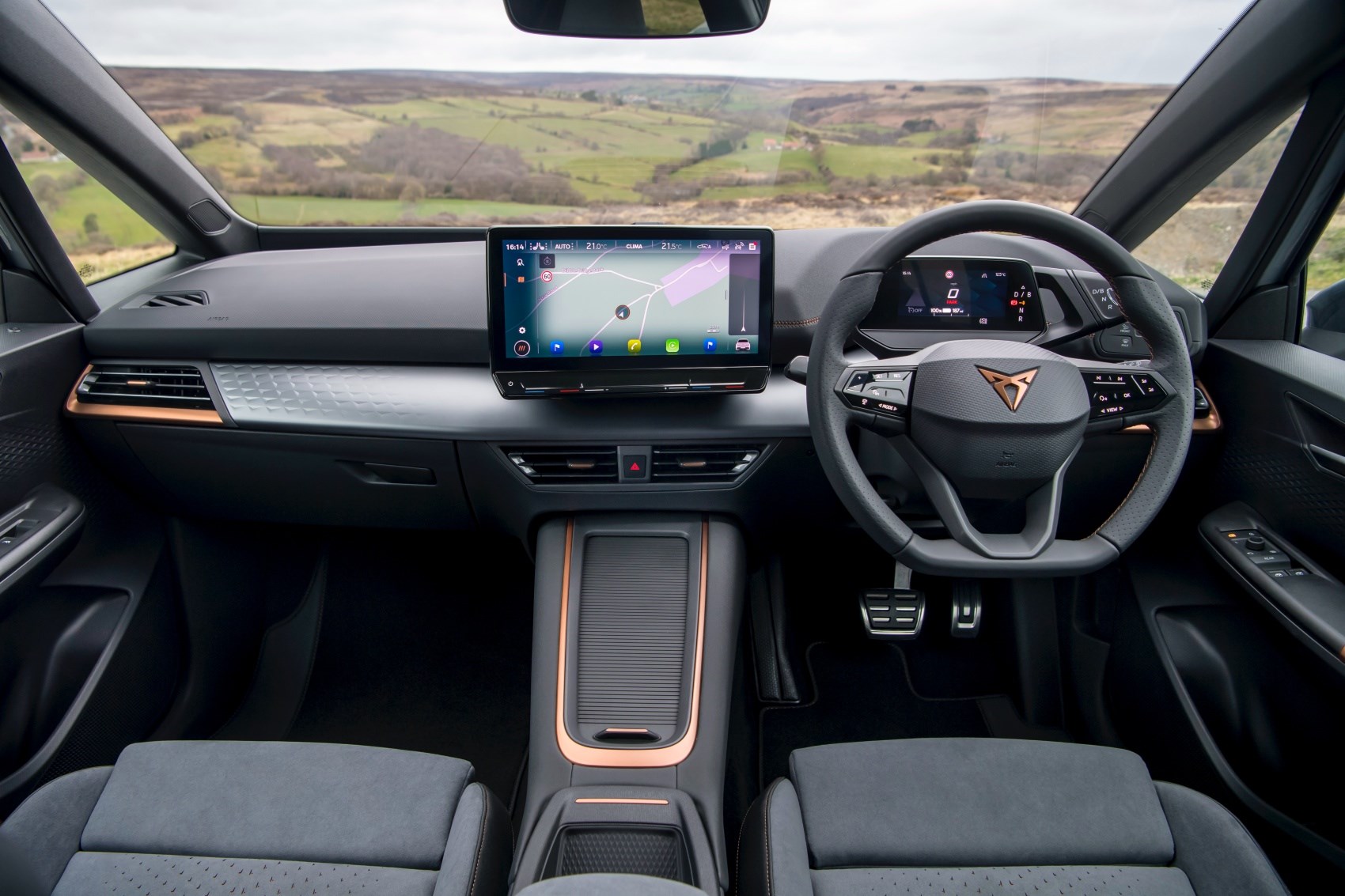► The ID.3’s sportier Spanish sibling
► Gets a range of tweaks to differentiate it
► But is it different enough?
The Volkswagen ID.3 is an increasingly common site on UK roads, but the car you see here – the Cupra Born – isn’t. Based on the same MEB running gear as Volkswagen’s electric hatch, the Cupra promises to up the driver engagement, up the premium feel and generally make things a little more special. So is it any good, and does it feel more ‘dynamic’ – or is it just a ID.3 with a tracksuit?
To find out, we’ve been driven both power outputs available in the UK, the regular 201bhp car and 228bhp eBoost model. We’ve also spent months driving the latter, so we can give you an even more thorough look at Cupra’s pocket rocket.
Less fridge, more funk
Picture the ID.3, and then think about what Tim Burton would do to Volkswagen’s compact EV: that’s pretty much the Cupra Born.
Although it shares a platform with the VW ID.3, the Born dressed in the same folds and creases we’ve seen on the Formentor and Leon. It’s less-appliance-like than its MEB twin; the Cupra’s bronze highlights set it apart, and there’s no unsightly black band beneath the windscreen. We’ve seen the forthcoming facelifted version of the Born too, and that goes further still, updating the headlights with the brand’s new three-triangle DRL signature.
What’s different?
The Cupra features some changes under the surface too; the Born has a quicker ‘progressive’ steering rack than the ID.3 and lowered suspension as standard (15mm at front and 10mm at the rear). The way the Cupra applies its power to the road is different, too; it’s available with wider 235 section performance tyres, less restrictive stability control and a different tune for the optional adaptive dampers.
The Born is available with just two battery sizes in the UK, 58kWh and 77kWh. You won’t find the ID.3’s smallest 45kWh battery nor its least powerful motor here, so range is at the very least 261 miles for the 58kWh eBoost model, rising to 340 miles for the 77kWh version.
Just like similar modes we’ve seen on VW Group cars, eBoost offers a small power increase but only does so if parameters such as temperature and available charge align.

How does it drive?
The word ‘nippy’ was made for cars like this. Even in the all-singing Cupra mode, the Born has punchy if not neck-snapping acceleration – and traction is good enough too. But still feels brisk as speeds increase, although we suspect a Hyundai Kona electric or Kia e-Niro would still embarrass it in a straight-up drag race let alone a ‘proper’ hot hatch.
On winding roads, Cupra’s engineering tweaks are more noticeable: The Born’s quicker rack means it feels marginally keener to dive into flowing bends and hairpins than the ID.3. Revised DCC and ESP add to the engagement, although the harder you drive it the scrappier it feels.
The quick steering highlights the sheer weight of the thing in rapid-fire S bends so it never feels truly agile. Similarly, even with the ESC in its least intrusive setting you’ll only get a whiff of oversteer before the electronics cut power and apply the brakes.
However, after living with the car in London, we’ve found the Cupra a more entertaining drive around town after all. In tighter junctions, and 90-degree bends, there’s just enough torque to get the rear wheels loose – and we’ve often found ourselves sliding the Born around – especially in the winter months. While it doesn’t have the poise or the road-holding of traditional hot-hatch, it’s fun in its own way – and very often below 30mph. Which is a bonus.
There is one drawback in town, though. The firm, tightly damped ride certainly puts you in a sporty mood, but it’s rather fidgety on the imperfections so typical on UK roads.

What’s it like inside?
The Cupra’s interior will be familiar to anyone who has driven an ID.3, but that’s not necessarily a bad thing. Like the VW, key information is shown on a pod that moves with the steering wheel, and functions are controlled via the wheel with capacitive buttons – or a floating touchscreen. Like the ID.3, the gears are also controlled via a shifting mechanism attached to the cockpit dials.
The Cupra’s larger 12-inch touchscreen is marginally less infuriating than the ID.3’s, although it can’t match the response of Tesla’s systems or the user-friendliness of Kia and Hyundai’s. You’ll find plenty of hard plastics around, but our test car’s liberal use of man-made suede, copper accents and contrast stitching help lift things significantly over the ID.3.
Even after getting used to it, the touch-sensitive controls on the steering wheel are too easy to set off accidentally and far less intuitive than a traditional button or dial. We also found the MPV-like split A pillars could obstruct your view when pulling out of junctions. Space is good by hatchback standards although the boot is nothing to write home about.
The verdict?
In isolation, the Cupra Born is an impressive bit of kit. Stylish, with more than enough power for urban environments, it also feels a touch sporty when you get past the city limits. The interior is solid too, and it’s competitive on paper too. However, the biggest problem for the Cupra comes in the form of its MEB-powered VW counterpart.
The Cupra may look significantly better, but in lesser 58kWh trims it’s hard to justify buying it over the VW. Some of the tweaks Cupra engineers have made are very subtle – and certainly don’t put daylight between the two MEB cars.
In higher-spec trims with all boxes ticked there is more of a difference, but it’s still not as pronounced as we’d hope.
Specs are for 170kW eBoost model.